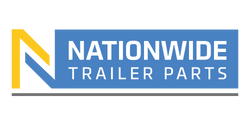
In the UK, the safety and regulation of lifting operations in workplaces are governed by the Lifting Operations and Lifting Equipment Regulations 1998 (LOLER). This legislation is critical for ensuring the safe use of lifting equipment, including lifting slings, which are commonly used in various industries such as construction, manufacturing, and logistics. This article provides an overview of LOLER, its significance, and specific considerations regarding lifting slings.
What is LOLER?
LOLER stands for Lifting Operations and Lifting Equipment Regulations 1998. It was introduced to ensure that all lifting operations involving lifting equipment are properly planned, supervised, and executed in a safe manner. The regulations apply to employers, the self-employed, and individuals in control of lifting equipment.
Key Requirements of LOLER
-
Thorough Examination and Inspection:
- Lifting equipment must be thoroughly examined before being put into service for the first time (unless the equipment has a Declaration/Certificate of Conformity less than one year old) and at regular intervals thereafter (every 6-12 months). This includes lifting slings, which should be checked for wear, damage, and other potential hazards.
- Examinations must be conducted by a competent person, and records of these inspections must be kept.
-
Safe Operation:
- Lifting operations must be properly planned by a competent person, appropriately supervised, and carried out in a safe manner.
- The equipment must be suitable for the intended use, and the working load limit (WLL) must not be exceeded.
-
Marking and Documentation:
- Lifting equipment, including slings, must be clearly marked with their safe working loads.
- Proper documentation and reports of examinations must be maintained. The critical date of first use should also be recorded.
-
Training and Competence:
- Individuals involved in lifting operations must be adequately trained and competent to perform their tasks safely.
Compliance and Best Practices
To ensure compliance with LOLER and maintain a safe working environment, organizations should adopt the following best practices:
-
Routine Inspections:
- Implement a regular inspection schedule for all lifting slings, adhering to manufacturer recommendations and LOLER requirements.
- Immediate action should be taken if any signs of damage or wear are detected.
-
Proper Storage:
- Store lifting slings in a dry, clean environment to prevent damage from environmental factors.
- Avoid exposure to extreme temperatures and chemicals unless the sling is designed for such conditions.
-
Load Testing:
- Periodic load testing can ensure that slings maintain their integrity under working conditions.
- Tests should be conducted under controlled conditions and documented thoroughly.
-
Training and Awareness:
- Continuous training programs for employees on the proper use, inspection, and maintenance of lifting slings.
- Foster a safety culture where workers are encouraged to report any concerns or potential hazards.
Conclusion
Compliance with LOLER is not just a legal obligation but a critical aspect of ensuring workplace safety in lifting operations. Proper use, inspection, and maintenance of lifting slings play a vital role in preventing accidents and injuries. By adhering to the regulations and adopting best practices, organizations can create a safer working environment and minimize the risks associated with lifting operations.
For more information and guidance on LOLER and lifting slings, consult the Health and Safety Executive (HSE) or a professional safety advisor.
